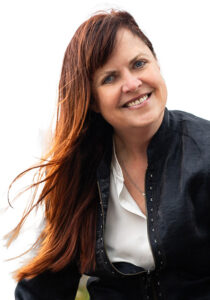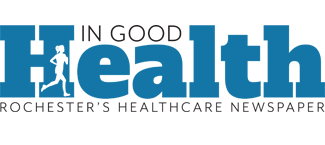Physician reflects on accomplishments as head of Monroe County Medical Society: “I think medical societies are needed even more in today’s society as a voice for patients and physicians”
By Chris Motola
 Q: You’ve finished up your term as president of the Monroe Country Medical Society?
Q: You’ve finished up your term as president of the Monroe Country Medical Society?
A: Yup, we transition on May 1.
Q: What would you describe as some of your key accomplishments from your tenure?
A: Of my term? I would say working on improving physician collegiality. Medicine today is so siloed and we’re all so busy. And we’ve kind of lost that place where we all communicate with each other socially. There used to be a doctors’ lounge which no one really uses anymore. So just trying to do more outreach.
Q: When you say doctors’ lounge, do you mean a room in a hospital or practice or more of a third space where physicians gathered after hours?
A: Most hospitals had a doctors’ lounge where you could finish your notes. This was years ago. There still is one, but no one really uses it anymore.
Q: Why is that?
A: I think a lot of it is what we’re expected to do in a day has increased so we don’t really have the time. We have to meet all these thresholds. See x amount of patients in day, perform x number of procedures. So we just don’t have the time anymore. When that happens everyone starts to get isolated, and that can contribute to physician burnout. So I’ve really made an effort to do some more outreach, get physicians to get together, whether it’s on a Zoom meeting or a social event just to help with that feeling of isolation and that loss of camaraderie.
Q: How do you work around that?
A: Being more present for people. Attending numerous meetings and putting my face out there. Reaching out to different groups. We hosted several social events after hours so that people could meet outside of the hospital and outside of their office. We’ve continued to host educational events. And for the young physicians we’ve hosted some dinner meetings to talk about finances and how to transition from residency and medical school into private practice, and how to do that with some financial knowledge. So many of us leave our training with a large amount of financial debt.
Q: What’s lost with a decline in collegiality, both from the patient and practitioners’ perspectives?
A: I think the isolation contributes to burnout, which negatively affects the patient-physician relationship. It can affect the physician’s whole life. Many aren’t able to give patients the attention they need because they’re so burnt out. Having a collegial environment can help decrease burnout. I’ve talked to physicians who are struggling with burnout and after you sit and talk with them and lend an ear to support, it can lift a huge weight off of their shoulders. And by doing that, that’s going to improve patient care. For the patients, if the physicians are feeling better about themselves, they’re going to be better able to listen, which is a common patient complaint. If we’re not as burnt out we can listen more effectively and improve that physician-patient relationship that is so fractured.
Q: I’ve heard one of the big challenges for medical societies right now is a decline in the number of the private practices that largely support them. How can you make them work at a time of increasing group and hospital-based practices?
A: I haven’t figured that one out. I grew up in an era where more physicians were employed in private practice versus hospital-employed. One of our challenges right now is how do we reach the employed physicians and show that we do have value, because they tend to think the hospital is covering all their needs. So we’re working with Causewave Community Partners to determine what we really need to focus on to move the medical society forward. I also think we need to do a better job with all physicians in terms of communicating what the medical society actually does, because a lot of people aren’t aware of all the advocacy we do for both patients and physicians. And I think that lack of communication contributes to people not understanding the value of the medical society.
Q: What’s your elevator pitch for the Monroe County Medical Society?
A: I think medical societies are needed even more in today’s society as a voice for patients and physicians. So much of our day and medicine in general is centered around insurance companies, the payers, and big hospital systems. And I think what medical societies can do is truly advocate for that patient-physician relationship that is so important for both sides. And I think that’s important for putting the passion back in medicine, the reason why so many of us went into medicine. Some of that’s going to involve education as the payers change the way they reimburse. Some of that is just offering support to both private practice physicians and hospital-employed physicians to deal with the burnout. We still have significant burnout even though it’s decreased since COVID. Bringing passion and caring back into the profession of medicine, the medical society is critically poised to do that.
Q: What’s next?
A: I’m retired from hospital practice but still have all my credentials. I do a lot of volunteer work. I’m medical director of the Webster Comfort Home, a hospice care center. I’m a health officer for my little village in Wayne County. I’m still active in medicine, I’m just not getting paid for it now.
Lifelines
Name: Janine L. Fogarty, M.D.
Position: Medical director of Webster Comfort Home; former president of Monroe County Medical Society
Hometown: Sidney, New York
Education: SUNY Upstate Medical University
Affiliations: Unity Hospital
Organizations: Monroe County Medical Society; Rochester Academy of Medicine; Medical Society of the State of New York; American Medical Association
Family: Husband (Jim), two children
Hobbies: Reading, boating, cooking, lounging by the water at Sodus Bay

